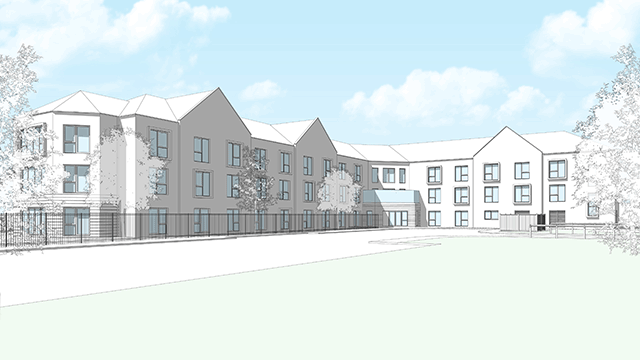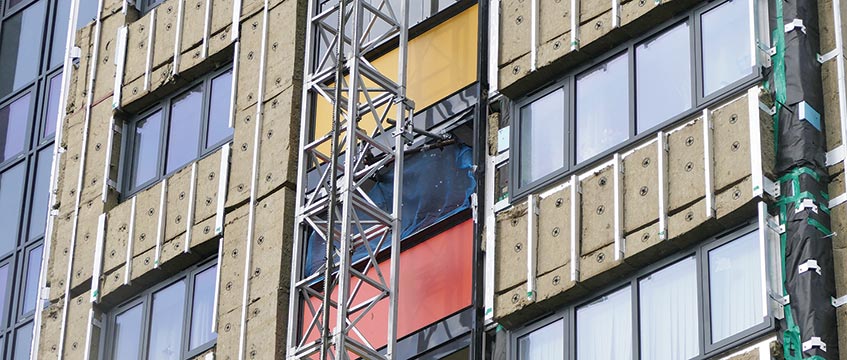The impact of the Building Safety Act 2022 is not limited to higher-risk buildings or residential units.
Rather, the Act is extensive in its reach. It is reshaping most parts of the construction industry, with projects affected to some greater or lesser extent, despite not being HRBs or residential buildings.
Gateway regime
There is now a clear recognition that the new gateway 2 and 3 regime is applicable to HRBs, where the Building Safety Regulator becomes the building control body, instead of the local authority. This will apply to buildings of at least 18 metres in height or that have at least seven storeys containing at least two residential units.
It also applies to care homes and most hospitals meeting the height requirement, at least during the development stage. However, care homes and hospitals are not included in the new regime for HRBs during occupation contained in Part 4 of the Act.
An HRB only requires two dwellings or other units of living accommodation to be subject to the new building control regime. This means student accommodation and co-living are also covered by the Act. It is also important to note that mixed-use developments will be caught if they have two dwellings or other units of living accommodation.
Defective Premises Act 1972
Setting aside the gateway regime, what else does the Act apply to?
One key aspect of the legislation is that it amends the 1972 Act – creating new and longer-lasting liabilities for work, including design, conversions and modifications, relating to “a dwelling” where the dwelling fails the standard of fitness for habitation.
This applies retrospectively, with a liability of 30 years from 28 June 2022 for work completed before this date. The future liability is also extended for 15 years for projects completing on or after 28 June 2022.
The 1972 Act covers all dwellings, not just those in HRBs. It also applies where there is a single dwelling, so low-rise and single-unit residential developments, as well as mixed-use buildings that have a single dwelling.
Dutyholder regime
New dutyholder requirements have been included in the Building Regulations as of 1 October 2023.
There may be a misconception that the regime is only relevant to HRBs, or residential units. This is incorrect. The new dutyholder obligations on clients, designers, principal designers, contractors and principal contractors applies to all projects where the work is subject to the Building Regulations.
To add a further layer of complexity, the dutyholder requirements are not the same across all projects since, where HRBs are involved, enhanced duties apply to all dutyholders.
Liability relating to construction and cladding products
Construction and cladding product manufacturers also face increased liability under the Act.
Sections 148 and 149 of the Act create new causes of action against construction and cladding product manufacturers and those that market and supply construction and cladding products.
Liability may arise where the construction or cladding product contributes to or causes a dwelling to be unfit for habitation when the works are completed. Claims under section 148, in respect of construction products, are subject to a 15-year limitation period – applying prospectively for claims arising on or after 28 June 2022.
Claims made under section 149, in respect of cladding products, are subject to a 30-year limitation period applying retrospectively to claims accruing prior to 28 June 2022 and 15 years applying prospectively for claims arising on or after 28 June 2022.
The scope of these provisions is extensive, applying to residential properties in England, Wales and Scotland. In addition, parties cannot contract out of the potential liability arising under these sections.
Levy on new residential developments
A number of provisions in the Act are yet to be fully implemented. Many of the outstanding provisions have broad application that is not limited to those involved in the design and construction of HRBs.
Section 58 of the Act provides for a levy applying to all new residential buildings requiring building control approval. This levy is expected to raise an estimated £3bn over the next 10 years and will contribute to the cost of remedying building safety defects. Secondary legislation is necessary to implement the levy and the government has published a second consultation setting out its proposals.
The scope of the levy applies to buildings in England consisting of or containing one or more residential dwellings and other accommodation, including temporary accommodation such as a hotel or a hospital.
The consultation does, however, propose certain exceptions. For example, to support smaller developers, it proposes that the levy will not be applied to developments of less than 10 units or below a specified per square metre figure, depending which option is chosen.
The consultation recognises that certainty over the levy rate is critical to those operating in industry, enabling businesses to “project plan effectively”. However, the government has yet to set out possible levy rates.
The consultation makes reference to the fact that the real estate industry also faces other charges, including the residential development property tax and the community infrastructure levy. It states that the implementation of a further levy may “impact on the viability of some projects” and potentially impact the number of houses that are built.
The government is “considering the cumulative impact of these measures, and this may be taken into consideration in setting levy rates”, but so far, there has been little clarity provided to the industry.
New-build homes warranties
Section 144 of the Act also provides for new-build homes warranties to be provided by developers of new homes.
The period of cover under the policy must be at least 15 years. This period mirrors the extension to limitation periods under the Defective Premises Act 1972 and section 38 of the Building Act 1984, when this provision is in force.
Financial penalties for failing to provide a new-build home warranty will also be provided for in regulations. Section 145 of the Act states that the maximum penalty may not exceed £10,000 or 10% of the sale price of a new home.
Although new-build home warranties are commonly provided – often a requirement to obtain mortgage financing – there will be a statutory obligation for developers to provide these under the Act.
Further regulations are necessary to set out the detail of the warranty that must be provided, including the types of defects that the developer must agree to remedy, the insurance requirements and details regarding the ability of a person that has the benefit of the policy to transfer this to another person.
It is unclear when the government intends to implement these provisions, but it will not be able to do so until the insurance market offers such products. All eyes are, therefore, now on whether the insurance industry has the appetite to provide these products with an extended term of 15 years, and from discussions we have had to date with brokers in that market, the future is by no means certain.
Section 38 of the Building Act 1984
Much has been anticipated regarding section 38 of the 1984 Act, where liability will be subject to a 15-year limitation period, applying prospectively when this provision is in force.
Once brought into force, section 38 allows a claim for compensation for physical damage caused by a breach to the building regulations. This applies to all buildings in England and Wales; therefore, the scope of application is much wider than just dwellings.
Understanding the detail
The sheer volume of this legislation and its wide application should not be underestimated.
The Act came into force in 2022, but has been implemented in stages with regulations – providing the detail of many of the provisions – being published in a piecemeal fashion. For example, the regulations providing the detail of the gateway and dutyholder regime came into force on 1 October 2023, with the government publishing these just six weeks before.
Getting to grips with this complex legislation has been a challenge for the construction industry and wider real estate sector. Maintaining building safety is, however, critical and significant investment, time and resources are being dedicated to ensure the legislation is met. This is an ongoing challenge and the focus must remain on understanding the detail and complying with the provisions now in force.
Rick Atha is a construction partner and Amber Wright is a professional support lawyer at Shoosmiths








